- Home
- Andy McNab
Brute Force ns-11 Page 2
Brute Force ns-11 Read online
Page 2
Two huge brass propellers glinted in the murky water ahead; they would start turning soon, to take us out of port – but not just yet, I hoped.
The quay was now behind me. The Bahiti's bulbous stern swept out above the waterline and I kept out of sight beneath the overhang. I unclipped the compass and let it drop.
I finned up slowly, brushing my hand against the hull from time to time to steady myself. The vibration from the engines pulsed up my arm. My head broke the surface; I was still sheltered by the overhang.
There was clamour and movement above me. The world was unmuffled. I took off the mask and let it hang by its tube as I undid the catches on the re-breather and sent it the same way as the compass.
Finning to keep my head above water, I felt around in the net and pulled out the modified mine magnet. Well, not so much modified as minus its mine. It was about twenty centimetres by twenty, with a thin rubber cushion cemented to one side to prevent a resounding clang inside the ship as the thing grabbed onto the hull, followed by a shower of grenades from the deck.
I clipped the karabiner to the steel handle I'd welded onto the other side of the magnet, where the mine had been, then hung onto the net sack and waited for the crew of the Bahiti to get their shit together.
For the best part of an hour the clanking and shouting and general fucking about carried on seven or eight metres above me, then the final one of the crates the Libyans had spent the last few hours loading slid into place a few inches the other side of the hull.
There were only six crewmen – this rust-bucket was about cargo, not Caribbean cruises – but you wouldn't have known it from the amount of hollering and swearing as the gangplank was heaved aboard. By now my fingers were wrinkled and skeletal and had lost every shred of feeling.
The engines rumbled into action and the hull vibrated like a jackhammer. The back rope was released from a bollard on the quay and splashed into the water about a metre from my head before being hauled aboard.
The water behind me started to churn. I didn't know if this thing was going to get towed out by a tug, or leave under its own steam. It didn't matter either way, so long as nobody came and started messing about anywhere near me.
The boat moved slowly away from the quay, but my legs still came up to the surface; I'd had to keep my fins on in case I got pinged and had to swim for it. Now we were under way, I could kick them off. I didn't plan to hang around much longer. I had to get on board before Liam and his mates got up a decent head of steam.
It wasn't long before the lights of the harbour were behind us. The headland emerged from the shadows on my left.
The propellers were kicking up a storm. My hands and arms were numb from the cold, and the strain of holding onto the net.
I fished out a one-metre pole that could extend to ten. Next came a rolled-up ten-metre caving ladder with 12.5mm tubular alloy rungs suspended on galvanized 4mm steel wire, and a spring-mounted, four-pronged hook at the top. The whole thing weighed no more than about three kilos.
All I had to do now was rig the ladder onto the pole, extend it one metre section by one metre section, twisting it to lock each time. Soon it was fully stretched and vertical, scraping against the side of the ship.
Spray splashed my face. With my arm still hooked into the netting I started to manoeuvre the ladder hook until it grappled onto something solid on the deck. The closest thing I could see was the housing for the mooring rope.
The water buffeted against me as we gathered speed and I had to fight to keep my pole arm steady. At least I didn't have to worry about noise. My efforts were entirely focused on getting that hook to engage. There was no point worrying about the magnet; if it gave way, it gave way. Why worry about what you can't change?
I just hoped that anyone on the bridge was looking straight ahead and not pissing around on the wings. Fuck it, I'd soon find out. The captain and his mate should be up there behind the steering wheel. The other four would be fucking around with the engines and whatever other stuff you needed to keep the ship afloat and pointing in the right direction. I didn't know much about life on the ocean wave, but I couldn't think why any of them would be hanging around at the stern, staring idly at the wake. That was the sort of thing I would have done.
I had so much seawater in my mouth I was starting to gag. My eyes stung. I felt like I was in one of those tidal exercise pools and someone had turned the dial to max. I bounced up across the surface one second and got dragged down by the sheer weight of water the next. I had to get some better leverage. With my left hand hooked into the net, I pushed against the hull with my feet and tried to brace myself.
The harbour lights faded into the distance. Isolated settlements glowed weakly along the coast.
On the sixth or seventh attempt, the hook finally snagged. On what, I didn't know, but it was holding. I gave it a sharp tug, then another. It held.
I released the karabiner from the magnet, let the net fall and gripped the ladder with both hands. My legs were swept from under me as I flailed in the Bahiti's wake, hoping like fuck that I wasn't going to be sliced into a million little pieces by the churning propeller screws.
5
You don't climb caving ladders the same way as you do traditional, rigid ones. You go up them side-on, using your heels, not the balls of your feet. That way you don't get tangled and fuck up.
I moved one hand up a rung and the corresponding foot. Then another. And another. Then I was out of the water. The ladder flapped around in the wake as I bounced around at a forty-five degree angle.
I kept on going, hand over hand, foot over foot. The only lights I could see now were on the ship itself. If the ladder came unstuck or I fell, it was going to be a long swim back.
A couple of rungs from the top I could see that the ladder's hook, or at least one prong of it, was caught on the rope hole – and that it was too small for me to climb through.
I scrabbled to get one hand onto the bottom rail, then two, heaving myself up and onto the deck with the world's biggest chin-up. I kicked the ladder and pole away. They dropped into the boiling white foam eight metres below.
I moved straight into the shadows at the rear of the bridge tower, peeled off the wetsuit and binned it over the side as well. My head and hands were still ice cold, but my body was drenched with sweat.
The priority now was to get below. There were hatches all over the place. They were all tied down, but that didn't matter; I knew exactly where I was going and how to get there. As you looked towards the bow, there was a door to the right of the bridge tower. I edged my way to the corner and lay flat on the deck. I eased my head round at ground level.
The door was open, just as Lynn had said it would be. Weak yellow light spilled from inside. I drew level and checked down the narrow corridor. Layers of badly painted cream gloss adorned the walls, and stairs led off to the right and left. The lino-covered floor was impregnated with grit to prevent slipping.
I could hear voices on the bridge above me, muttering in Arabic-accented English, then Duff – it had to be him, because he was giving orders – replying. The engines thundered below. I couldn't see any sign of movement. I crossed the threshold and headed straight downstairs.
The engine noise got louder with each step I took. The louder the better, as far as I was concerned. An open door to my left reminded me of watching Voyage To The Bottom Of The Sea as a kid: the Seaview's had been exactly the same.
I heard voices from the engine room but I didn't check them out – the door I wanted was opposite and just short of it.
The cargo hold was lit, but it felt like a dungeon. Crates and alloy boxes were stacked in two sections to within a few feet of the ceiling, leaving an alleyway between them just wide enough for a man to squeeze through, and another around the sides. The whole lot was lashed down with nylon nets and ropes.
The place stank of oily wood and grease. The floor seemed to be covered with wheat – its normal payload, perhaps – but these crates and boxes weren'
t going to be full of Shreddies, that was for sure. I stepped over the dark brown detonator cord that ran left and right of me then around the side of the cargo.
I had to climb on top of the stack before I found a spot where the net was slack and there was a space just big enough to move around in.
I unclipped the green metal retainers on the top wooden crate, and hauled up the netting so I could get the lid open. I didn't really need to check. I had spent years humping boxes exactly like these all over the world when I was in the infantry. The contents were as the stencilling described: it was a general-purpose machinegun in its transit chest. The butt and barrel had been removed and placed in receptacles cut into the interior framework. Even the GPMG's cleaning wallet, a green nylon bag, was exactly where it should have been. The whole lot was factory fresh.
The 150 tonnes of weapons were bound for the Provisional IRA. I wasn't going to unload each box to make sure Lynn was right, but he'd told me there were a thousand AKs; a million rounds of ammunition; loads of GPMGs; 450 hand grenades; rocket-propelled grenade launchers and grenades; SAM ground-to-air launchers and missiles, each one capable of downing a British army helicopter; anti-tank launchers, and thousands of electric dets and fuses. There were even a couple of crates of flamethrowers, apparently, and to top it all off, two tonnes of Semtex explosive, lovingly fashioned in the old Czechoslovakia.
Mansour was organizing the shipment. It was en route to the west coast of Ireland, and from there to the streets of Derry, Belfast and the UK mainland. It seemed bizarre to me that the task wasn't to sink the thing. That, it seemed, was Two Cells' job if the shipment was compromised.
He wouldn't fuck about. According to Lynn, he was the best of the best when it came to making IEDs, and prepared to die for the cause. He'd even offered himself up as a suicide bomber – to wrap himself around Maggie and then press the detonator button – but the boyos thought he was too good to waste.
The dim glow of a torch appeared at the far end of the aisle, heading my way. I flattened myself against the stack.
The beam slewed across the gap between the crates and brightened with every footstep. Its owner moved closer to where I was hidden. As he came into the light from the corridor, he switched off the torch. He passed below me.
I moved my head fractionally and saw Two Cells walking towards the entrance I'd just come through. His hair hung lank and greasy down the back of his neck.
He closed the door behind him.
I jumped down and headed over to see what he'd been up to.
Not that I couldn't already guess.
6
He'd glued the timer power unit directly to the bare steel to the right of the bow. I could still smell the Evostik.
The TPU consisted of a blue wooden box about twenty centimetres square and four deep. The top was screwed down and the detonator leads emerged from a small hole in its side. The det itself, an aluminium cylinder the size of half a cigarette packed with HE, was gaffer-taped to a length of brown det cord. Essentially washing line with a high-explosive filling, it snaked away down the aisle.
The boy knew exactly what he was doing. He'd left a good fifteen to twenty centimetres of cord hanging before he'd attached the det, in case any moisture or shit had contaminated the end of the line. He wanted to make sure that when he was detonating, he was only detonating good HE.
I followed the ring main of det cord along the floor, down the narrow aisle between the weapons and ammunition boxes and the hull. I saw the first device straightaway.
The tin dustbin lid was flush against the hull, held in position by two wooden stakes wedged back against the cargo. The det cord disappeared into a hole drilled centre-rear, from which a bead of yellow PE extruded; I knew Two Cells would have knotted it inside the lid before feeding it back through to continue the ring main.
Twelve charges had been set around the hull. Lynn was right: this boat wasn't going to be taken alive. In fact, Lynn had been right about everything so far.
Two Cells had used a dustbin lid because its shape would do the most damage. Instead of the brisance – the shattering effect of the explosion – dissipating in all directions, it would be sufficiently focused to cut a dustbin-lid-sized hole through the hull.
The det cord running along to the next charge would detonate in a split second – and so would all the others.
I went back to the GPMG box and took out the cleaning wallet, a small tool roll with slots.
There was no need to follow the ring main any further than the first charge. The business end was back at the TPU.
The wallet contained a combination tool, a sort of purpose-built Leatherman used to split the weapon so you could clean out the carbon deposit that glues itself to weapons after firing.
I used the flat-head screwdriver bit to remove the four brass screws holding down the lid. Two Cells had been taking no chances. He didn't want anyone or anything getting inside to mess with the device by mistake. He was the only one going to kick this thing off.
My job was to disarm the devices while making it look like a malfunction. I also had to kill Two Cells, and make it look like an accident. As Lynn must have said to me a hundred times, the charges must not go off. The shipment must be preserved at all costs. That suited me fine. I didn't want to spend the next few days bobbing up and down in the Med.
The TPU was made out of a mechanical Parkway timer, the kind you used to be able to buy on a key ring as a parking reminder. They were made illegal when it was discovered that more of the things ended up inside TPUs than in motorists' pockets.
The Parkway was a small disc powered by a spring mechanism. You put your money in the parking meter, turned the disc to twenty minutes, say, and away it would tick. When the twenty minutes were up, the disc would hit zero and the device would start ringing. Bomb-makers didn't care about that – they just needed a small and reliable mechanical timer. Keep it simple, stupid: you didn't have to worry about anything going wrong – you just set it for any delay up to an hour and walked away.
The TPU only had four main components: the twelve-volt battery that would provide the power to initiate the det connected to the ring main; two short lengths of steel about twice the size of a sewing needle, and, of course, the Parkway timer, all Evo-stuck down to prevent anything moving that shouldn't. A thin blue wire linked the negative terminal to one of the leads from the det.
The positive lead was only partially glued down; it coiled its way to a small steel rod glued vertically on top of the Parkway's zero marker. Another wire joined the second det lead to the second rod, embedded horizontally into the wood so the two would complete the circuit when the time ran out. For the time being, a rubber pad was wedged between the two to stop the current completing its journey.
All Two Cells had to do was turn the Parkway to whatever time delay he wanted, pull out the rubber pad, and let the TPU do the rest.
7
I felt myself break into a smile. These things always worked better when they were kept simple, but you had to be really smart to put them together this competently. I'd been wrong to call him Two Cells. This boy really knew what he was doing. My smile widened. I double-checked the joints between the terminal wires and the det leads and knew exactly where he'd learnt his craft. Unless he was an Afghan, it was right here in one of the terror training camps in Libya or Algeria. Nobody else used this variation of the Chinese pigtail to join their wires.
The Chinese labourers working for the Western Union in the Wild West used it to repair downed telegraph lines. They took the two cut ends, crossed them left over right to make the first part of a reef knot, and then twisted the two ends together. They didn't finish the reef knot because it just wasn't practical. The wires hung between poles, making it close to impossible to tie the second part of the reef – and the half reef and pigtail twist both guaranteed conductivity and held the connection, even with a couple of vultures sitting on the wires, waiting for Jesse James to come by and leave them lunch.
&nb
sp; When we went to teach the Mujahideen, we found that they flapped a whole lot more than the average Chinaman. They'd do the half-knot but forget the twist, or do the twist but forget the half-knot. So we taught them the complete reef knot, left over right, right over left, then a pigtail twist with what was left of the wire – exactly as Big Ben had done here. It wasn't long before the TPUs we taught the Muj, and the tricks we'd learnt from PIRA, were being taught in the crazy colonel's terror schools.
All I could do now was hang around and wait. I climbed back into the gap between the GPMGs and the deck. I lay there curled up, trying to listen for other noises above the steady thud of engines, my nostrils filled with the aroma of gun oil. It reminded me of every armoury I'd ever been in.
As I lay there with the rope net digging into my back, I started to worry about the amount of information I'd been given. The more I knew about a job, the more I could see that I was just a little, dispensable cog in a very large and ugly machine.

 Get Me Out of Here!
Get Me Out of Here!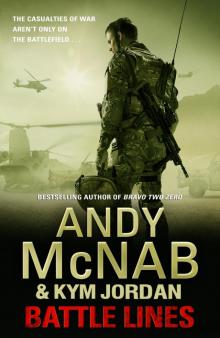 Battle Lines
Battle Lines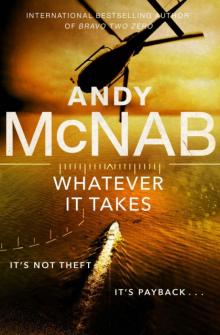 Whatever It Takes
Whatever It Takes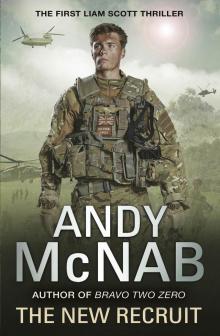 The New Recruit
The New Recruit War Torn
War Torn Brute Force
Brute Force Crossfire
Crossfire Dark Winter ns-6
Dark Winter ns-6 The Grey Man
The Grey Man Spoken from the Front
Spoken from the Front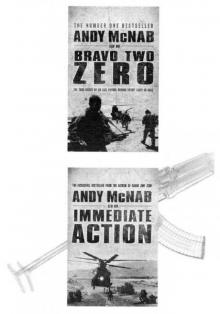 Meltdown
Meltdown Recoil
Recoil Nick Stone 1 - Remote Control.
Nick Stone 1 - Remote Control.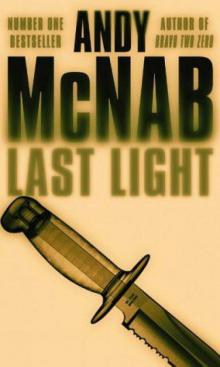 Last Light ns-4
Last Light ns-4 Liberation day
Liberation day Deep Black
Deep Black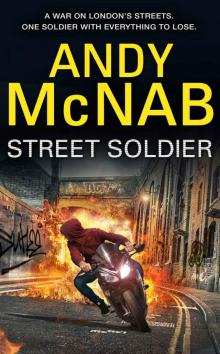 Street Soldier
Street Soldier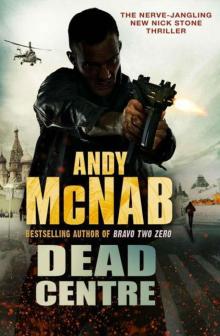 Dead Centre ns-14
Dead Centre ns-14 Exit wound ns-12
Exit wound ns-12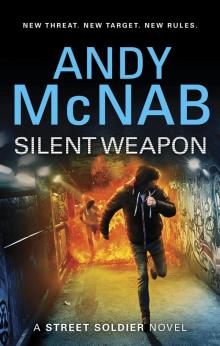 Silent Weapon
Silent Weapon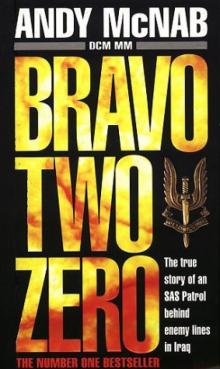 Bravo two zero
Bravo two zero Crisis Four ns-2
Crisis Four ns-2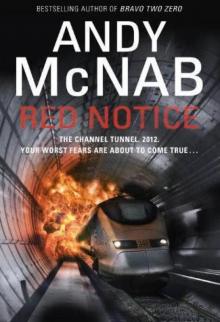 Red Notice
Red Notice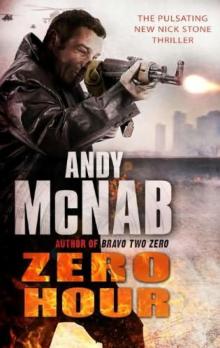 NS13 Zero Hour
NS13 Zero Hour Firewall
Firewall Last Light
Last Light Aggressor
Aggressor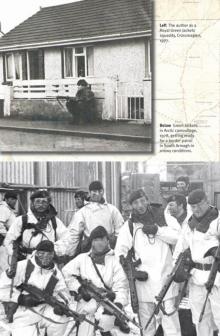 Seven Troop
Seven Troop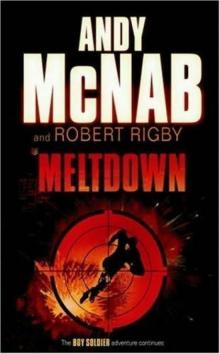 Meltdown bs-4
Meltdown bs-4 The Grey Man (quick reads)
The Grey Man (quick reads) The New Enemy
The New Enemy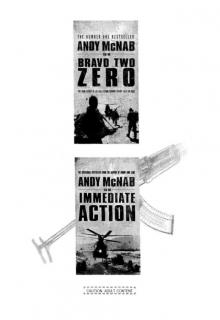 Avenger
Avenger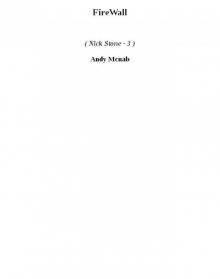 FireWall ns-3
FireWall ns-3 Silencer
Silencer Last Night-Another Soldier…
Last Night-Another Soldier…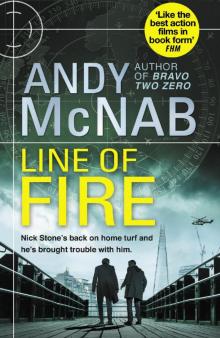 Line of Fire:
Line of Fire: Detonator
Detonator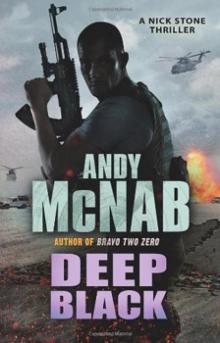 Deep Black ns-7
Deep Black ns-7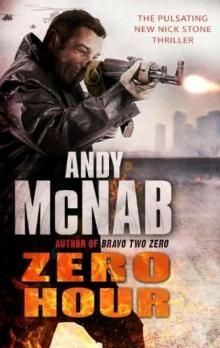 Zero Hour (2010) ns-13
Zero Hour (2010) ns-13 Brute Force ns-11
Brute Force ns-11 Cold Blood
Cold Blood Terminal Velocity
Terminal Velocity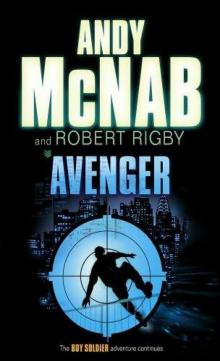 Avenger bs-3
Avenger bs-3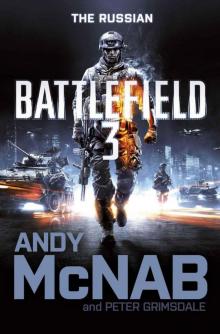 Battlefield 3: The Russian
Battlefield 3: The Russian DropZone
DropZone Zero Hour
Zero Hour NS13 Zero Hour (2010)
NS13 Zero Hour (2010)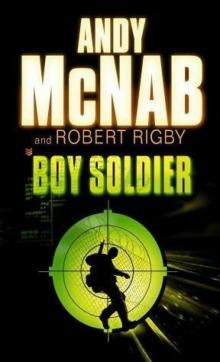 Boy soldier bs-1
Boy soldier bs-1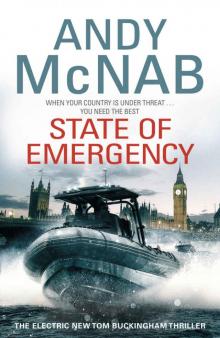 State Of Emergency: (Tom Buckingham Thriller 3)
State Of Emergency: (Tom Buckingham Thriller 3)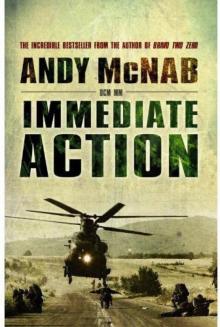 Immediate Action
Immediate Action The New Patrol
The New Patrol Crisis Four
Crisis Four Boy Soldier
Boy Soldier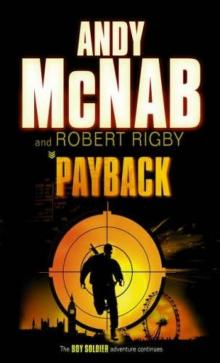 Payback bs-2
Payback bs-2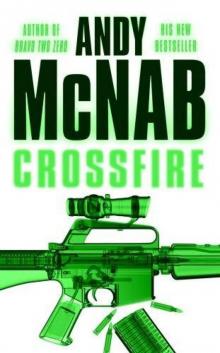 Crossfire ns-10
Crossfire ns-10 Today Everything Changes: Quick Read
Today Everything Changes: Quick Read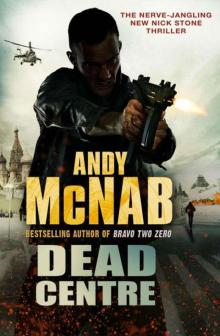 Dead Centre
Dead Centre For Valour
For Valour Liberation Day ns-5
Liberation Day ns-5 Aggressor ns-8
Aggressor ns-8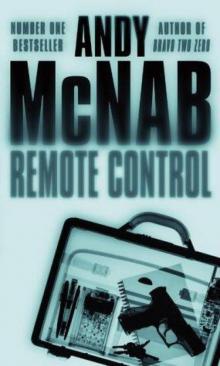 Remote Control ns-1
Remote Control ns-1 Fortress
Fortress On the Rock
On the Rock Dark Winter
Dark Winter